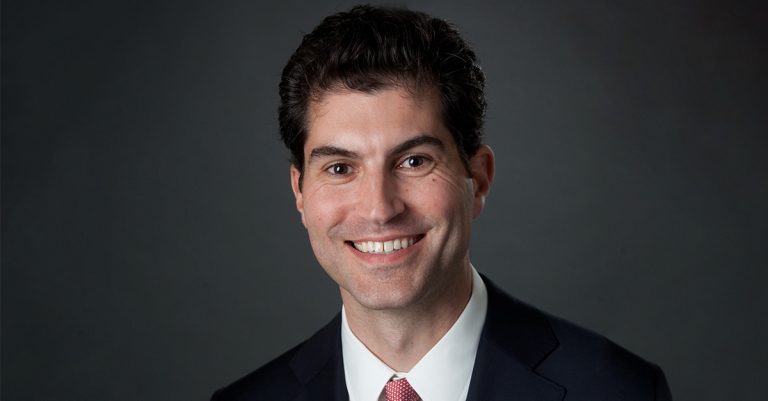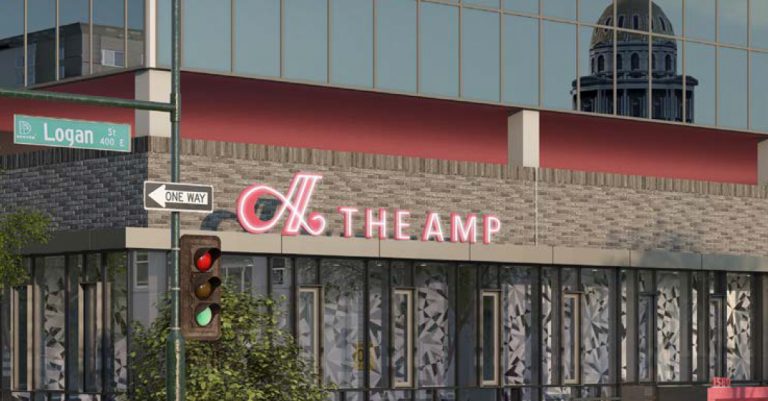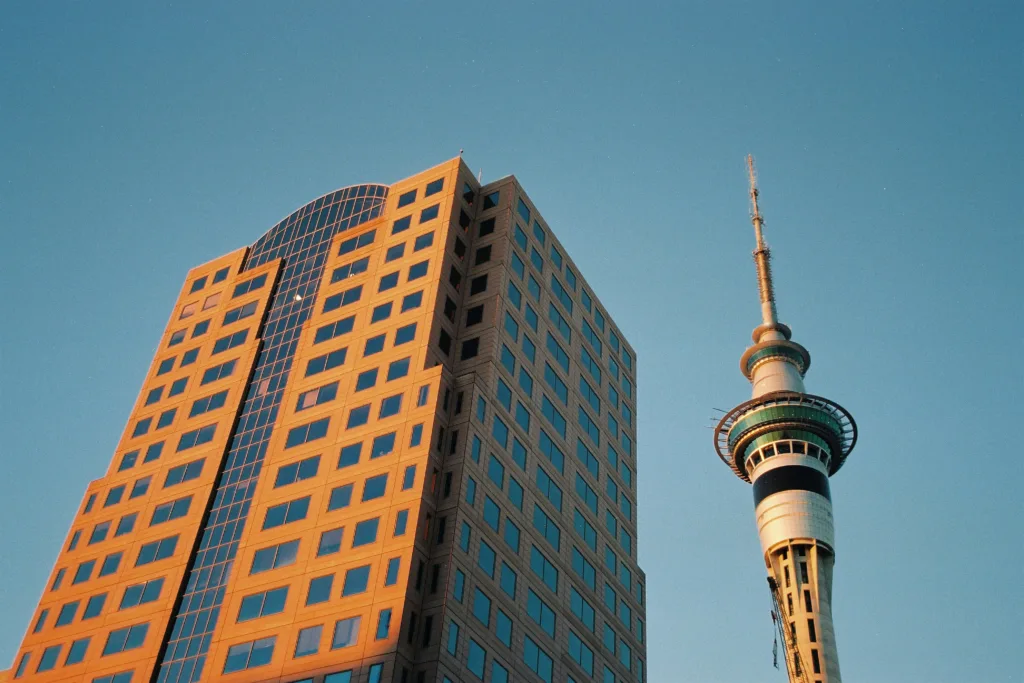Pat Rippe
Managing Director, Portfolio Optimization
As a Managing Director for Pennybacker Capital, Pat oversees the private equity firm’s office portfolio throughout the entire development, re-development, and asset management processes. Whether it’s a renovation and reposition or a ground-up project, Pat collaborates with various teams both inside and outside the organization to create exciting and innovative properties that incorporate the best tenant experiences and speak to the unique elements of their surrounding communities.

You have a pretty impressive real estate background. Can you tell me a little more about it?
I’ve been in commercial real estate for about 18 years. It’s an interest that I’ve had since undergrad. I did an internship between my junior and senior year in commercial real estate abstracting leases. I ended up dual majoring in finance and real estate, and really enjoyed it. I’ve always found real estate interesting, and it’s something that I truly love. I’ve never looked to veer away from it.
I’ve been with Pennybacker for two and a half years now, but geographically I’ve been to a lot of places through prior jobs. Before Pennybacker, I was with Tishman Speyer for six and a half years in Los Angeles and New York. Before that, I was with JLL for a little over five years doing tenant rep leasing, development consulting, and investment sales in Los Angeles and Chicago. I have also worked in my hometown of St. Louis and now am settled here in Denver.
What a diverse set of experiences!
It is. Before I went to business school, I was in brokerage and consulting. I worked on the services side of JLL for several years. At the time, JLL was predominantly in leasing, and flipping properties was outside of the scope of what leasing brokers would do. I was part of a group called Development and Asset Strategies, where we would take big, funky, or dirty properties that the firm’s corporate clients owned, conduct highest and best use studies, master plan them if needed, and then get them entitled and sold to a developer. That was my first exposure to how owners, investors, and developers look at these kinds of projects and how they underwrite them. It made me realize that I didn’t want to be on the services side, I wanted to be that developer. I wanted to be the person who could have a vision, create it, and execute it. It’s what made me go back to school and switch from the services side to the ownership and development side. I’ve been very fortunate to do what I do.
Tell me a little more about what you do at Pennybacker.
Pennybacker is an investment manager that invests in and manages real estate on behalf of institutional and high net worth investors. We’re investing our fifth value fund right now. Our strategy is to acquire undercapitalized or mismanaged properties, fix them up, and then sell them at stabilization. We oversee heavy renovations and repositionings across office, industrial, and multifamily properties — and in some cases, ground-up development. I lead the asset management, development, and redevelopment of our office portfolio nationwide.
There are definitely so many considerations that have to go into making a property marketable. It’s amazing.
Yes! Adaptive reuse of a building that had a different past life is so interesting and fun to me. Going back to watching Ghostbusters in the 80s — when they turned that old fire house into their headquarters — really stuck with me. I loved it. We’re working on an interesting deal right now with Stream in Atlanta. We’re taking a former warehouse and chicken processing plant, which was turned into a movie and TV production studio, and converting it into experiential office space. The finished product will embrace its history, and incorporate it into the redesigned product to create a highly differentiated space in that market. It’s a fun way to approach any project!
I think this is a perfect opportunity to talk about all the cool things you’re doing with The Amp!
Of course! The Amp is another significant renovation and repositioning project. It was a 1982 commodity brick and steel office building in a great neighborhood. It’s in Uptown Cap Hill, right outside of Denver’s central business district. But, frankly, the building itself was not super exciting. We bought that building pre-COVID with the goal of making it the best building in Denver. I don’t want this to look and feel like a renovated 1980s office building. I want this to compete with the newest, best, and coolest construction projects in the city. We didn’t want to hold back on design or amenities. Obviously everything has to make sense financially, but we wanted to design and make choices that we think are the best for the asset. And that’s what we’ve been able to do. Fortunately, Pennybacker’s senior management gives me the freedom to do that. They understand the vision and that makes these kinds of projects especially rewarding.
Where does The Amp stand now?
We’re currently under construction. Design is done. We’re going to be delivering spec suites in November, and the fully renovated building will be delivered in January. We’ve been working very closely with our architects, our contractors, and HqO to develop our tenant experience app that fully articulates everything we want tenants to understand about this unique property. We want it to match the design intent of the building, and we’re redoing all the technology systems so that the app is its central hub. I want to see everything from a communications channel with management, to booking amenities, to even swiping your phone to get into the parking garage or your suite. Everybody carries their phone with them all the time, and I want that to be the key to everything going on in The Amp.
You talked about differentiating this building through experiential design. What types of amenities and programming will future tenants be able to benefit from?
We’ve had a lot of discussions around that, both for this building and for all of our projects. An amenity set in a building shouldn’t just be checking boxes off a list. Pre-COVID, you had to have things like a fitness center and conference rooms. Whether those spaces were actually used by tenants didn’t really matter. Now, the industry has shifted its thoughts on this front.
The Amp itself is a relatively small building, about 75,000 square feet. We’ve had to figure out if building a large fitness facility or something like that is useful or meaningful. The reality is that the neighborhood we are in is as much of an amenity as anything we can build. The Amp’s Walk Score ranking is 96, which is fantastic, right? It’s a great neighborhood. And within a block, there are three other fitness facilities. Why build a gym, when we can just partner with Orange Theory a block away and offer discounted memberships for tenants?
All the cool stuff in the neighborhood becomes part of your amenity package. Because of this, we’re more focused on providing flexible public spaces that can be booked for meetings, used as lounge space, or used as ad-hoc meeting space when it’s not reserved. We’re primarily targeting small-to-medium sized tenants at The Amp. Maybe they have a meeting once a week, or maybe it’s once a quarter. Let’s say it’s anywhere from 10 to 30 people. Why should they have to pay for that square footage in their space? We’ve thoughtfully placed it in the lobby. It’s designed with great technology that they can use for free, so that they don’t have to worry about that expense.
We also installed large pivot doors that open up to a furnished area with comfortable seating, large library tables, lamps, and more. This way, if you want to take a phone call or step away from the office, you can just go downstairs, take a seat, and work down there with a cup of coffee for an hour or so. The Amp also offers another elevated lounge area that provides drinks and seating, a catering kitchen, secure bike storage, showers, and lockers. A lot of people in Denver ride their bikes to work and some of these bikes are more expensive than my car. So they want to be able to put those somewhere safe while they work, instead of chaining them in front of the building. We truly thought about what would bring the highest value to our specific tenant base, not just things to check a box off a list.
You’ve already started to touch on this next question, but I have to ask: Why is it so important to have such personalized building and tenant strategies?
Tenants spend anywhere from 8-10 hours a day in your building. The thought of walking into an office building with a sense of dread because you don’t like where you work is awful. I don’t want that to happen. I want people walking into their office excited and energized. I want music playing different music genres throughout the day for different moods. I want programming. I want to ensure that building staff is visible, engaging with tenants and creating a genuine community. The workplace should be a positive experience. We want people to love The Amp, and for it to function as a retention tool for tenants. If we make their lives easier, they will stay a part of our community. We think of it as creating a virtuous cycle, where everyone’s lives can be better and everyone can benefit from it.

Consumer-first experiences are definitely where the industry is heading.
And buildings don’t need to be just the plain vanilla office building that you can find anywhere. They all shouldn’t look the same. With The Amp specifically, we’re a block off Colfax Avenue. Colfax has a weird, long, cool history in Denver and we want to emphasize that. It has unique characteristics, interesting architecture, and great music venues which we are really embracing with this repositioning. We want it to capture and incorporate those elements — hence why even the name is music-related! We’ve made sure to hide a few Easter eggs throughout the property, such as references to alligators. There are urban legends of bars on Colfax with alligator pits in their basements. It’s strange, but it’s fun. And we really wanted to embrace it because it’s part of the fabric of the neighborhood.
I love how unique your properties are. Let’s dive a little more into the technology aspect of things. Since we’ve already talked about how technology can help tenants, how does technology help you with your role?
Technology allows us to do a couple of things. Historically, people had to rely on rules of thumb, anecdotal evidence, or word of mouth from a property manager or building engineer. That’s how you had to develop things and run a building. You had to figure out if you were going to offer amenities, who was going to use them, and how they were going to use them. Now, technology enables us to communicate more directly with our tenants, get direct feedback from them, and discover how people are using a given space. Specific details like what are they using? Who is swiping into the gym? What times of day are they using the space? These can all help determine if you need the amenities you have, or if you need to do something different. We can collect, slice, and dice data to tailor what we’re going to do moving forward to meet the needs of existing and potential tenants.
And what role is technology playing in the future of the workplace?
I think part of it is access to real-time data to drive decision making. Like I said, for years it was based on guesswork. Now, we can use data that allows us to make smarter, better decisions that are more valuable for tenants, investors, and even the environment. Additionally, the pandemic challenged a lot of office planning assumptions. A lot of people thought that tenants wouldn’t ever work from the office again. A few months into COVID, we thought it was great. We didn’t have to commute, we could wear sweatpants, there was no office chatter. But there is so much more to work than just putting your head down and working, right? There’s a social, collaborative, and interactive element to it that is so crucial to the success of a company and even individual employees.
Now, nothing I’m saying is completely earth-shattering. But I think we’re getting away from the typical nine-to-five where everybody just works at home, Zooms into every single meeting, and is fine. I think there will be a balance between being in the office and being at home, and that the office of the future is set up more for collaboration. It’s less the fact that everybody has their own desk, and more of the fact that the office is a place that fosters the ability for you to interact with your bosses, coworkers, people that report to you, and other people that are in your same industry or share your building that you don’t necessarily work with, but you may run into. It’s about sharing ideas and connections. That kind of friction and interaction is good.
This has been so insightful! To wrap things up, what advice would you give to someone who is new to commercial real estate?
That’s a great question. I would say to have a goal and a path that you’re trying to get down, but don’t be so laser-focused on just the direct line to that goal. I’ve had a wide variety of experiences, and I feel like I’ve gained very relevant knowledge across those different experiences. They all have allowed me to get to where I am today. I think if you’re singularly focused on one thing — whether it’s asset management, acquisitions, development, or leasing — those things need to work together. If you just know one side of things, you may become a specialist, but your knowledge base is going to be so limited that you won’t be able to fully appreciate all those other aspects and how they come together to make a project successful. So have a goal. But don’t be afraid to veer away from that goal and pick up some new experiences along the way. They give you a better perspective and understanding of what it takes to make a real estate project successful.
Conversations was a monthly blog series that featured the managers and partners who use HqO at the property level — the things they saw, the challenges they had, and how they thought technology impacted them. You can still catch these stories by subscribing to its podcast counterpart: Conversations with HqO. For more information about Pennybacker Capital, click here. To learn how HqO can elevate your tenant engagement strategies, schedule a free demo today.



